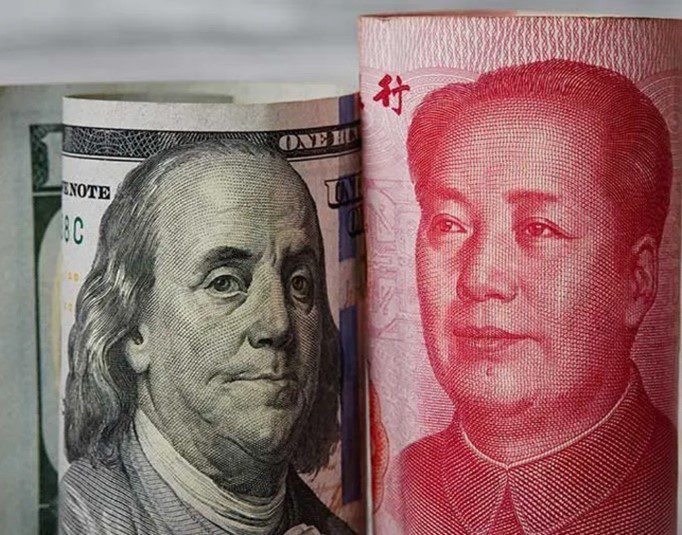Big changes ahead for Chinese Individual Income Tax regime.
On August 31st, China’s top legislature approved the revised Individual Income Tax (IIT) Law in their attempts to work towards a fairer income distribution. Upcoming changes allow for some growth in incomes, but also redefines the meaning of a resident individual in China, thus directly affecting foreigners working in China.
Introducing a Higher Minimum Threshold
As the SCMP reports, the final approved bill increases the monthly tax-free threshold to 5000 yuan (60 000 yuan per year), as compared to the previous 3500 yuan per month. The new tax threshold will apply to both local Chinese employees and foreigners working in China. The upcoming changes thus take into account the increase in consumer spending and aim to lessen the overall tax burden on taxpayers, especially of for the low to middle income group of consumers, allowing for some growth in average incomes before taxes kick in.
Table 1: Individual Income Tax Brackets
Taxable income is total income in a tax year minus the personal deduction of 60 000 yuan, specific deductions, itemized deductions for specific expenditures, and other deductible items.
Introducing Special Expense Deductions
The NPC Observer reports that in addition to “special deductions” (专项扣除) for social insurance contributions, the new bill for the first time introduces special expense deductions (专项附加扣除) for resident individuals. These include, but are not limited to, parental elderly care, children’s education, continuing education, treatment for serious diseases, housing rental and housing loan interest – however, more details on these are yet to be released.
New Tax Residence Rules
The revised law recognizes two types of tax-payers, namely resident individuals and non-resident individuals. The length of residence used to distinguish between the two groups will now be adjusted to 183 days from the previous one full year and the tax year runs from 1st of January until the 31st of December.
- Resident individuals (居民个人) – referring to those who have domicile or reside in China for a total of 183 days in a tax year while receiving income either from PRC or abroad. Resident individuals must pay income tax in accordance with the law.
- Non-resident individuals (非居民个人) – applies to individuals who do not have domicile and reside in China for less than a total of 183 days in a tax year.
In addition, for resident individuals, IIT on comprehensive income would be calculated annually (as opposed to monthly under the current Law) based on the total comprehensive income earned during a tax year, minus any applicable deductions. If the comprehensive income has tax withholding agent, the tax could be withheld by monthly or by number of times under the agent. And the tax resident should do the annual tax filing after year-closing.
Preventing Tax Evasion
The new law also adds an anti-tax avoidance clause, thus permitting tax authorities to adjust tax rates when individuals transfer property in violation of independent trading. Individuals evading taxes via overseas tax havens or obtaining improper tax benefits by organizing unlawful commercial activities will also be subject to the clause.
Table 2: The New Individual Income Tax Scheme at a Glance
The New Threshold to be Enforced in October
The New IIT Law will be implemented in two phases. Phase 1, including the higher tax threshold of 60 000 yuan per year and broadened access to lower tax brackets will take effect from October 1 of this year.
Details of the tax deductions, such as those for education and elderly care expenses, must still go through revisions and be decided by the State Council, based on the advice of the Ministry of Finance and the State Administration of Taxation. Thus, the effective date of Phase 2 will be January 1, 2019.
The current law has undergone seven revisions since it was enacted in 1980. The current threshold is 3500 yuan according to the revision made in 2011.
How to Calculate Your Taxes?
Not quite sure how the new tax threshold will affect your salary? Here’s a guide, followed by a simple example calculation to help you navigate through the tax system in China as of October 1st, 2018.
- Firstly, take your monthly gross salary, i.e. what you make before taxes, and subtract 5000 yuan from it. If applicable, also subtract any special deductions (i.e. for education, medical expenses, etc.) So the formula would be like this: Monthly gross income-special deduction-5000 ¥ =Taxable income
- As the Chinese taxes are progressive, use the above chart to find your tax rate and the applicable “quick deduction”. The tax rates range from 3% to until up to 45%.
- Next, the tax rate needs to be multiplied by your monthly taxable income. Subtract the “quick deduction” from your result and you will get the amount of tax you will have to pay from your salary in China.
An Example for Calculating the Monthly Income Tax:
So, for someone gross salary is 18 000 RMB per month, and special deduction is 3 600 RMB (assumed) the steps would be as follows:
- Subtracting 3 600 RMB and 5 000 RMB from the gross salary:
18 000 ¥ – 3600 ¥ – 5000 ¥ = 9 400 ¥
- Based on the chart, the tax rate for 9 400 RMB is 10% and the quick deduction is 210 RMB.
- Tax computation will be :
9 400 ¥ * 10% – 210 ¥ = 730 ¥
From the above steps, we see that someone earning 18 000 RMB gross per month would pay 730 RMB for tax and end up bringing home 17 270 RMB.
Do you have more questions about the new IIT Law and how it may affect You? Contact us to learn more about the upcoming changes and follow us on social media to receive all the latest updates!
Scan for our WeChat mini-program






